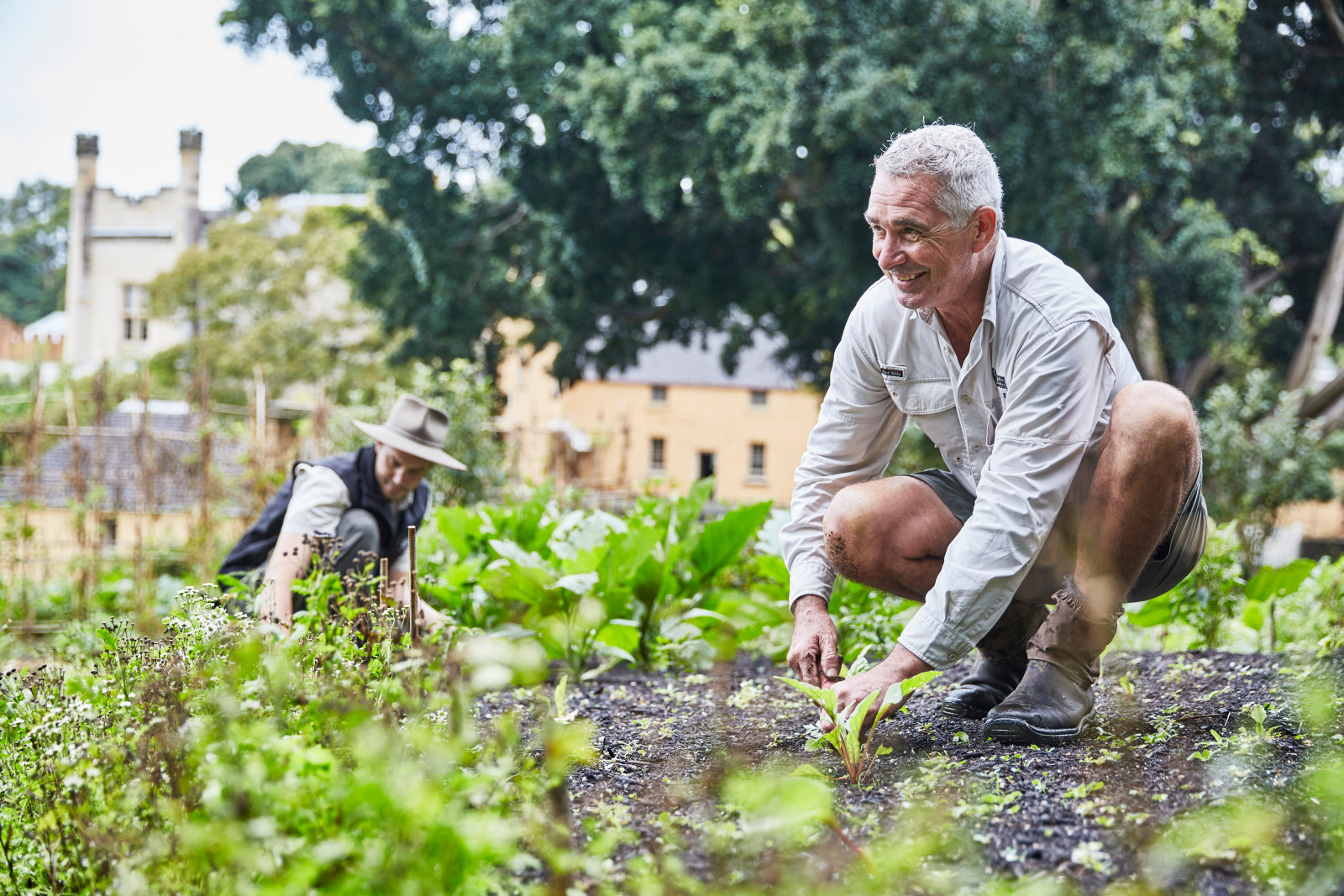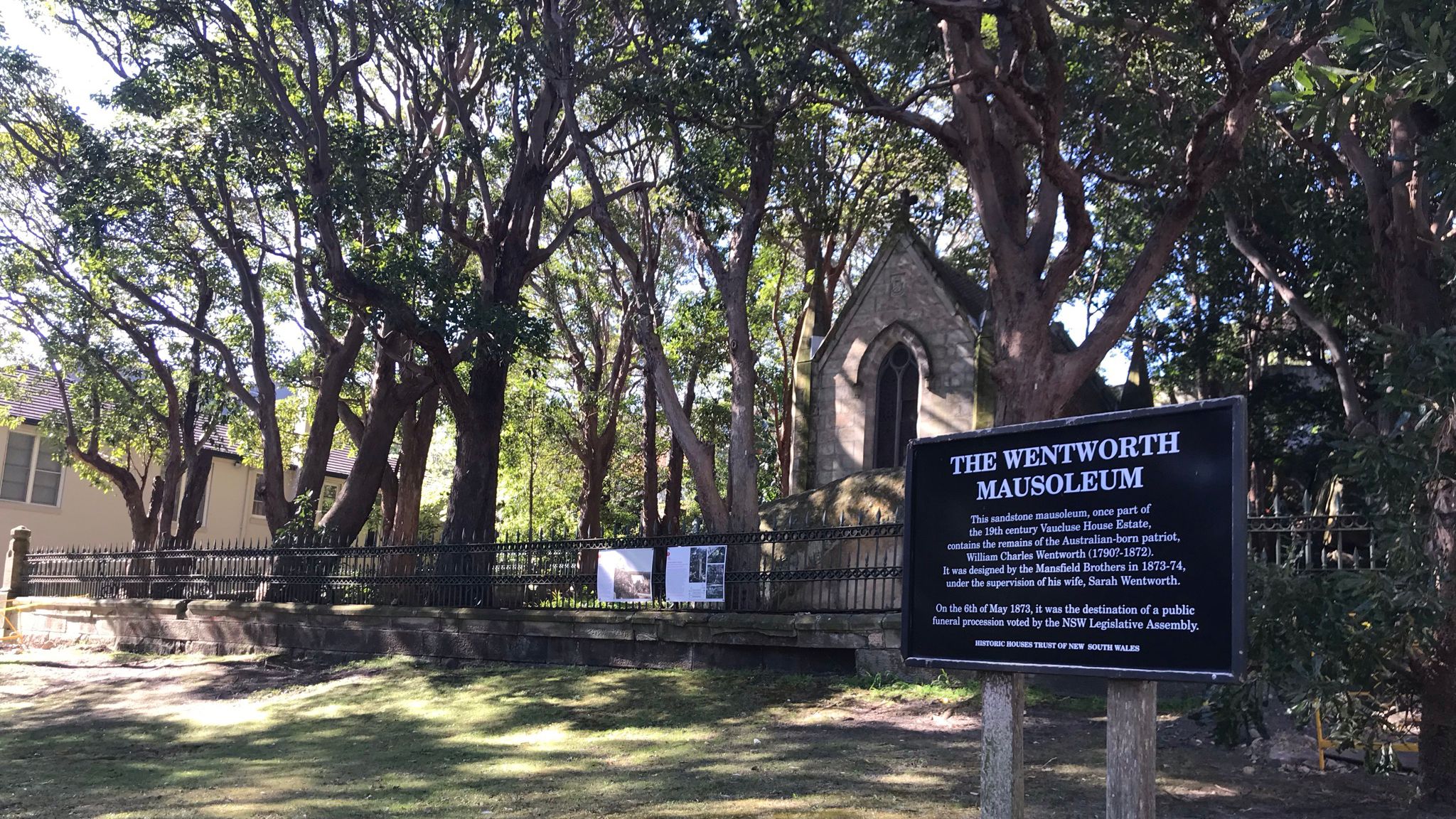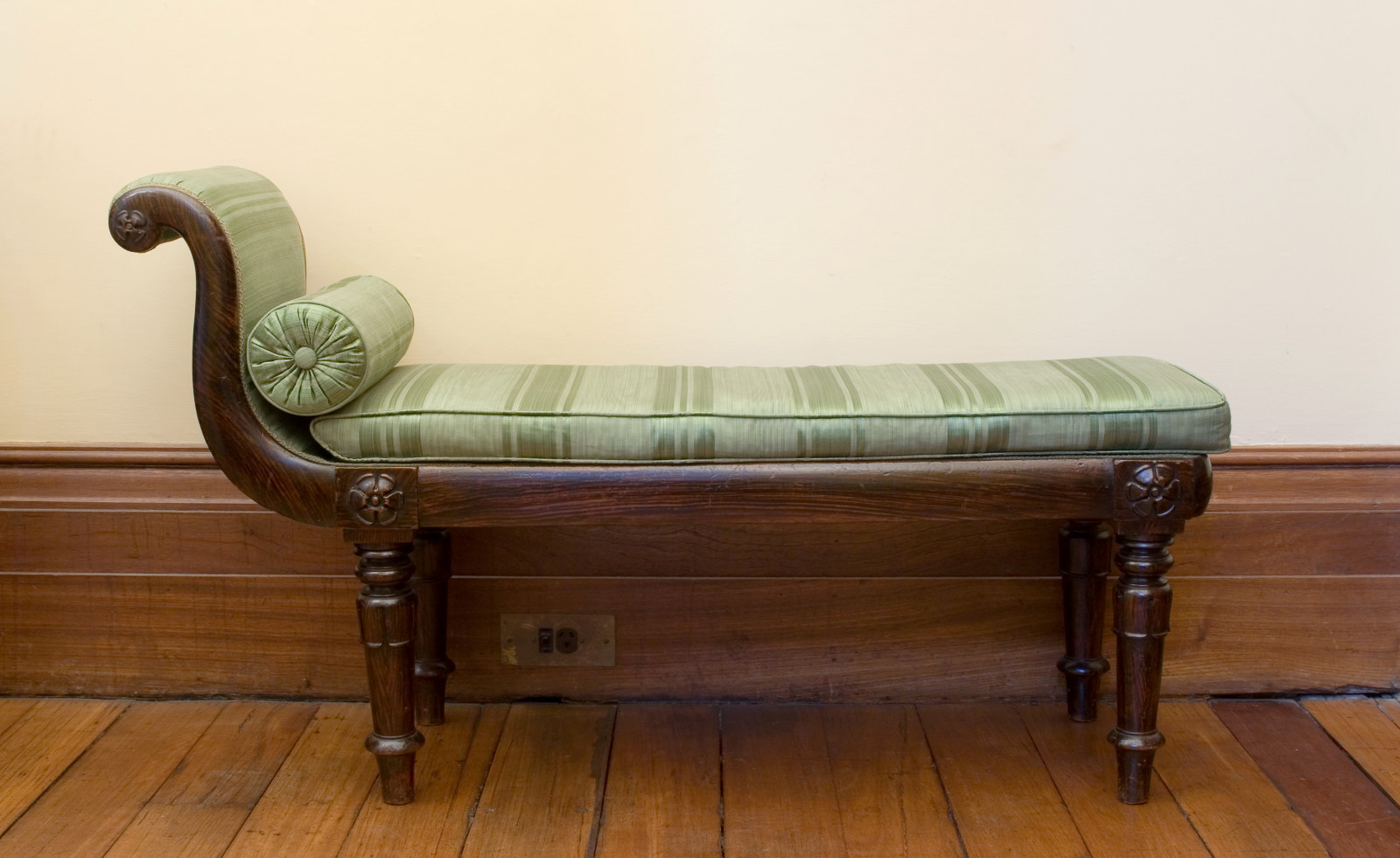Absconding with the silver
Vaucluse House stands unique as a relatively intact 19th century Sydney harbourside estate.
The house is highly compartmentalised with a covered walkway separating the reception rooms from the kitchen wing. Fortunately, much of the architectural detail underlining the divide between the so-called 'polite' and 'service' areas survives, reflecting a large body of contemporary literature on architecture, estate planning and domestic management.
The butler’s pantry - a key service area - was located at the northeast corner of the kitchen wing, with a view over the carriage loop so that arrivals could be attended to efficiently. This well appointed room was the office, secure store and workplace of the head servant of the household.
Records of a colourful incident in 1835 bring some these servants to life, including the Wentworths' butler Joseph Kay. In a daring attempt to 'improve his fortunes', Kay seized the Alice, the Wentworth family's sailing cutter moored in Vaucluse Bay, absconding with a number of convict servants along with silver spoons and sacks of flour, sugar and tobacco from his employers' stores. The party was later apprehended north of Port Stephens. Unsurprisingly, the Wentworths seemed unwilling to employ a butler after this incident, although their reluctance may also have arisen from the family's social isolation and Sarah Wentworth's personal approach to household management.
In The English Housekeeper Anne Cobbett suggests that housekeepers performed the butler's role in lesser houses. This may have been the case at Vaucluse House, with a housekeeper (probably 'Louisa', the highest paid servant according to the household accounts in 1844 - 1845) occupying both the pantry (with its sink) and the 'woman's room' (with its hearth) across the hallway. These rooms were probably related by their day to day activities. Here, lamps were cleaned, trimmed and refilled, and delicate china, glass and plate were washed - away from the robust wares of the kitchen and scullery. The cold second and third courses of dinner were placed in the pantry until carried along the covered way to the dining room.
In 2007, it was decided to recreate the butler's pantry, using archaeological evidence and documentary records, drawing attention to this long lost, though once critical service area.
Fortunately for us, the 1910 Government Architect's plan of Vaucluse House clearly revealed a dresser running the length of the southern wall and a sink located under the eastern window. It appears that these fittings were unceremoniously stripped from the pantry during the 1920s renovation of the house, when the room was given a timber floor and became a costume display room and, later still, a curator's office.
It was also fortunate that three rectangular flagstones were unwittingly left behind, out of harm's way, under the timber floor. Not only did these guide the design and configuration of the new flagged floor but were carefully fitted into a corner of the room.
The timber dresser was reconstructed following the 1910 plan, which provided the dimensions of the top and base. Proportions and details, such as the cornice and painted finish, were borrowed from the surviving Wentworth dresser in the kitchen. Cedar from Port Macquarie was milled for the project.
A stone sink was commissioned from the NSW Department of Commerce stoneyard at Alexandria, based on dimensions provided by the 1910 plan and a survey of colonial troughs and sinks. The department is known for its skill in matching stone to that found on site and for its expertise in traditional stonemasonry skills. The pantry is now furnished with early Australian pieces, including a corner cupboard from the Caroline Simpson Collection, reflecting a tradition of retiring formal items to service areas.
Notes
1. Anne Cobbett. The English Housekeeper. London 1835.
Additional note: Please note that the original INSITES article states the date of the 'colourful incident' as October 1831. This may have been a typographical error and has been corrected in the text accordingly.
Published on
Related
Browse all
The coolest room in the house
What practical techniques can we learn from historical building design to minimise heat and energy consumption in our homes today?

Conservation
Vaucluse House kitchen garden
The Vaucluse House kitchen garden recently underwent a significant rejuvenation project to preserve the site and allow it to continue to be used as a valuable educational resource

Wentworth Mausoleum perimeter fence conservation
MHNSW is undertaking the first comprehensive conservation works to the fence surrounding the 1870s resting place of William Charles Wentworth

Designed with intent: colonial vs modernist chairs
This selection of furniture juxtaposes the old with the new: early 19th-century colonial seating and modernist styles made over a hundred years later